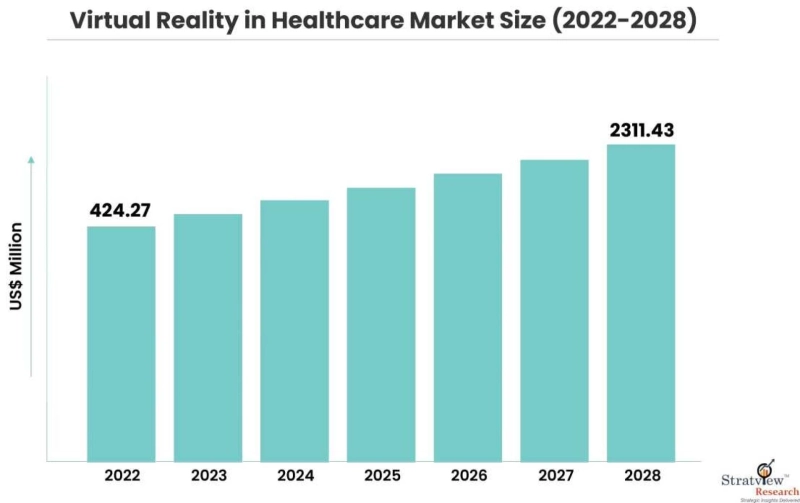Virtual reality (VR) is a technology that creates a simulated environment that users can interact with. It has the potential to revolutionize the healthcare industry by providing new and innovative ways to diagnose, treat, and manage patients.
The global Virtual reality in healthcare market is expected to grow at a compound annual growth rate (CAGR) of 32.60% from 2023 to 2028. This growth is being driven by a number of factors, including:
The increasing prevalence of chronic diseases, such as cancer and diabetes, which require complex and expensive treatments.The growing demand for patient-centered care, which VR can help to provide by allowing patients to visualize their treatment options and participate in their care plan.The rapid advancement of VR technology, which is making it more affordable and accessible.However, there are also some restraints and challenges that are slowing the growth of the VR in healthcare market. These include:
The high cost of VR headsets and software.The lack of standardization in VR technology, which can make it difficult for different healthcare providers to use the same systems.The need for more research on the long-term effects of VR on patients.The need for more training for healthcare professionals on how to use VR effectively.Despite these challenges, the VR in healthcare market is expected to continue to grow in the coming years. As the technology continues to develop and the cost of VR headsets and software comes down, VR is likely to become more widely adopted in healthcare settings.
Here are some specific examples of how VR is being used in healthcare today:
Surgery: VR is being used to train surgeons, simulate surgical procedures, and provide real-time feedback during surgery. For example, the VR surgery simulator by Osso VR allows surgeons to practice complex procedures in a safe and realistic environment.Pain management: VR is being used to distract patients from pain and promote relaxation. For example, the VR pain management system by Mindmaze uses virtual reality to create immersive environments that can help patients manage their pain.Mental health: VR is being used to treat a variety of mental health conditions, such as anxiety, depression, and post-traumatic stress disorder (PTSD). For example, the VR therapy program by Big Health uses virtual reality to help patients with anxiety and depression.Rehabilitation: VR is being used to help patients with physical rehabilitation, such as after a stroke or injury. For example, the VR rehabilitation system by VirtaMed uses virtual reality to help patients with stroke rehabilitation.Education: VR is being used to provide medical students with immersive training experiences. For example, the VR anatomy training system by Visible Body allows medical students to explore the human body in 3D.These are just a few examples of how VR is being used in healthcare today. As the technology continues to develop, we can expect to see even more innovative applications of VR in healthcare in the years to come.


